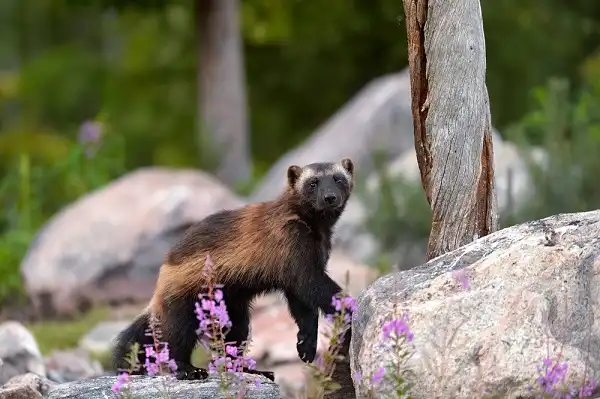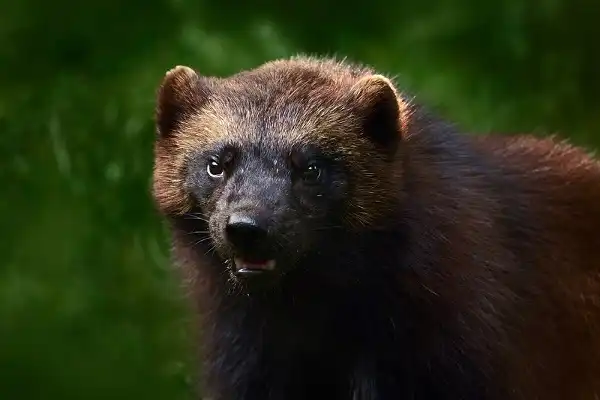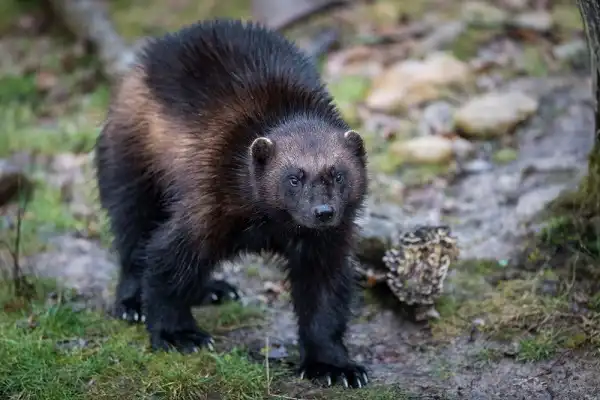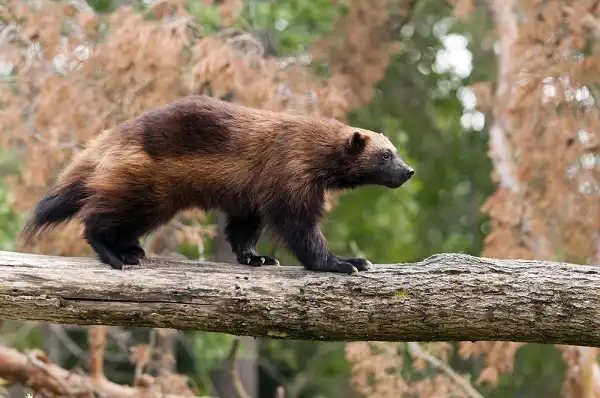As one of the most popular animals in North America, the wolverine is well-known for its strength and tenacity. However, there are many things about this amazing animal that are lesser known. For example, did you know that the wolverine is actually a member of the weasel family? This post will explore some of the more fascinating facts about the wolverine animal.

Wolverine Description
The wolverine (Gulo gulo) is a powerfully built animal that has a body shape similar to a bear, with short legs and a thick neck. Its fur is usually brownish-gray in color, with lighter fur on its chest and chin. Its distinctive feature is its bushy tail which can be up to 11 inches long. Wolverines are powerful animals and have very strong jaws, able to crush even frozen meat with ease. They have sharp claws which they can use for digging or climbing trees, as well as for gripping prey. Wolverines also have an impressive amount of stamina and can run for long distances at a sprinting pace. Wolverines have a stocky build which is covered in thick fur that helps them survive in harsh winter climates. The fur of a wolverine can vary in color, but it usually consists of a mix of browns, grays, and whites with black stripes along the back and legs.
Wolverine Habitat
Wolverines are found in an incredibly wide variety of habitats, from the remote boreal forests of Canada to the mountain ranges of Siberia. They prefer cold climates and can be found in alpine meadows, coniferous forests, and tundra regions. Wolverines are particularly well-adapted to surviving in cold temperatures, as they have a thick fur coat that helps keep them warm. Their habitat usually consists of dense vegetation and rocky terrain where they can hide from predators. Wolverines will also dig dens under rocks or logs for shelter during extreme temperatures. In addition to living in these more traditional habitats, wolverines have been known to adapt to human-altered lands such as farms and logging areas. Wolverines are fiercely territorial animals and will fiercely defend any area they consider their own. They mark their territory with scent by rubbing parts of their body against trees or rocks, and they use vocalizations such as growling or chirping to communicate with other members of their species. As a result, wolverine populations tend to remain stable in areas where there is suitable habitat for them to live in.
Wolverine Diet
Wolverines are mainly carnivorous animals that feed on carrion, but they will also hunt small rodents, fish, birds, and other small mammals if necessary. They have an impressive sense of smell which allows them to track down prey with ease. In addition to their regular diet of live prey and carrion, wolverines will also supplement their diet with vegetation such as grasses and berries when available. In order to survive in frigid climates where food is scarce, wolverines will eat almost anything they can find. They have been known to scavenge garbage or steal food from campsites! This omnivorous behavior helps them make the most out of the limited resources available in the wild. The importance of a balanced diet cannot be overstated for wolverines; it helps keep them strong and healthy so that they can go about their daily activities without difficulty. A high-protein diet is especially important for young cubs who are still growing and developing into adulthood. In addition to protein-rich foods such as meat and fish, wolverines should also get plenty of nutritious vegetation such as grasses and berries in order to stay healthy.

Wolverine Size
Wolverines are medium-sized animals, typically ranging from 8 to 20 kg. Males tend to be significantly larger than females at around twice the size and weight. Their body length can range from 60 to 90 cm and their tail length ranges from 15 to 25 cm. Despite their stocky build, wolverines are surprisingly agile and powerful animals that can run fast over short distances as well as climb trees when necessary. They have also been known to swim long distances when necessary, making them one of the most adaptable species on the planet!
Wolverine Lifespan
Wolverines typically have a lifespan of 8-10 years in the wild, although some individuals can live up to 15 years depending on environmental factors. In captivity, wolverines can live up to 20 years with proper nutrition and care. The oldest recorded wolverine in the wild lived to be 13 years old! In addition to their solitary lifestyle, wolverines have several physiological adaptations that help them survive longer such as their thick fur coats which protect them from the elements and predators, and their incredibly sharp claws which allow them to easily dig for food.
Wolverines also benefit from having relatively small energy needs compared to other carnivores since they primarily eat carrion or scavenge for food when possible. The lifespan of any individual wolverine ultimately depends heavily on its environment and available resources. In areas where food is scarce or predators are abundant, it is more difficult for an individual wolverine to survive long-term due to increased competition and risk of predation. On the other hand, if an area has abundant resources and minimal predation, then a wolverine is more likely to live longer as it can focus solely on finding food instead of worrying about defending itself against predators.
Wolverine Behavior
Wolverine behavior is largely solitary, with individuals only spending time together to breed or for brief periods of time during denning season. During the breeding season, males will compete against each other for the opportunity to mate and form a temporary pair bond with a female. This can result in some aggressive interactions between adult males as they battle for dominance. Wolverines are incredibly strong animals that are capable of dragging prey carcasses weighing over fifty pounds up trees or cliffs to store them away from predators or scavengers. They are also quite agile climbers, able to climb trees and scale steep inclines with ease if necessary. Wolverines use their long claws and muscular jaws to break open carrion as well as dig through snow and ice in order to find food sources beneath the surface. Overall, wolverines are unique animals whose behavior has allowed them to survive in even some of the harshest climates on earth!

Wolverine Speed
Wolverines are powerful predators with impressive speed and agility that allow them to easily outrun their competitors in the wild. On average, wolverines can reach speeds of up to 25 mph (40 kmph) when traveling short distances. This makes them one of the fastest mammals in the world when it comes to sprinting, enabling them to catch prey quickly or escape from danger in a heartbeat. Aside from being able to run at high speeds, wolverines are also very adept climbers and can climb steep surfaces or traverse rocky areas with ease. This is due to their long claws which aid in grip, as well as the strength of their powerful hind legs which gives them enough power and momentum to ascend cliffs or scale trees quickly if necessary. Wolverines are incredibly agile creatures that can make sudden turns while running in order to throw off pursuers or surprise unsuspecting prey. Overall, wolverine speed is an impressive adaptation that has allowed these animals to survive in even some of the most hostile environments on earth for centuries! Their agility and endurance coupled with their ability to quickly traverse difficult terrain make them rivaled by few other species – truly one of nature’s marvels!
Wolverine Hunting
Wolverines are powerful hunters that use their strength and cunning nature combined with their agility and sharp claws in order to successfully capture prey. They typically hunt small mammals such as rodents, hares, and other small game, though they have also been known to scavenge carrion when available. Wolverines are also agile climbers, able to scale cliffs and trees with ease, which gives them an advantage in the wild when pursuing prey or avoiding predators. In addition to using their claws for climbing and disemboweling prey, wolverines use their powerful jaws to break open carrion or dig beneath the snow and ice in search of food sources. They possess a remarkable sense of smell which allows them to detect the presence of potential prey from several miles away. They also have keen eyesight that can help them spot potential meals even in low-light conditions.

Conclusion
The wolverine is an incredibly powerful and agile creature that has adapted perfectly to its environment. Its impressive speed, agility, endurance, and keen sense of smell allow it to survive in even the harshest environments on Earth. In addition to these natural abilities, wolverines also use their sharp claws and powerful jaws to hunt their prey – making them formidable hunters as well. Unfortunately due to human interference, wolverine numbers have been declining in recent years which is why conservation efforts need to be made in order to ensure the preservation of these amazing animals. By preserving their habitats we can make sure that future generations will still get to experience the wonder of one of nature’s true marvels!
Frequently Asked Question

